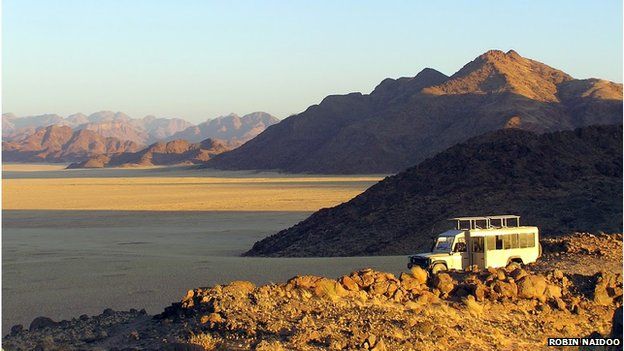Call for more investment in world's protected areas
- Published

The world's national parks and nature reserves receive eight billion tourist visits a year, generating around $600bn of spending, according to research.
The tourism income vastly outweighs the $10bn a year spent safeguarding them, says a Cambridge University team.
The study, published in PLOS Biology, highlights the need for more investment in protected areas, they say.
The idea of natural capital, the worth of natural assets, is increasingly being used in policy making.
It is based on assigning economic value to the natural environment in order to better preserve it in the future.
Cambridge University zoologists pieced together data on visits and economic benefits for the protected areas that cover one eighth of the world's land.
They say the money generated from tourism and recreation vastly outweighs the $10bn a year spent on safeguarding and managing these areas.
Further investment could yield economic returns as well as preserving precious landscapes, said lead researcher Prof Andrew Balmford.
"It's clear from these figures how much enjoying nature matters to people," he told the BBC.
"It's also equally clear that in many parts of the world these areas are being degraded and sometimes lost completely.
"For our children and their children to continue to enjoy these benefits, we have to invest more in protecting them."
Among the most visited natural spaces in the world are the UK's Lake District and Peak District National Parks, each with more than 10 million visitors a year.
The ten most frequently-visited sites (out of 556 for which the researchers had direct data) were in North America and Europe:
- Golden Gate National Recreation Area, US
- Lake District National Park, UK
- Peak District National Park, UK
- Lake Mead National Recreation Area, US
- North York Moors National Park, UK
- Delaware Water Gap National Recreation Area, US
- Dartmoor National Park, UK
- New Forest National Park, UK
- Grand Canyon National Park, US
- Cape Cod National Seashore, US
The high number of visits to natural spaces came as a surprise to the researchers.
Dr Matt Walpole of UNEP's World Conservation Monitoring Centre in Cambridge, which participated in the study, said it was an "astonishing figure that illustrates the value people place on experiencing nature".
Another researcher on the study, Dr Robin Naidoo of World Wildlife Fund in Washington, US, added: "Through previous research, we know that the existing reserve network probably needs three to four times what is currently being spent on it".
Prof Balmford said the $10bn a year currently spent on these areas is small when compared with the quarterly profits of the likes of the computing giant Apple.
"Stopping the unfolding extinction crisis is not unaffordable," he said.
"Three months of Apple profits could go a long way to securing the future of nature.
"Humanity doesn't need electronic communication to survive. But we do need the rest of the planet."